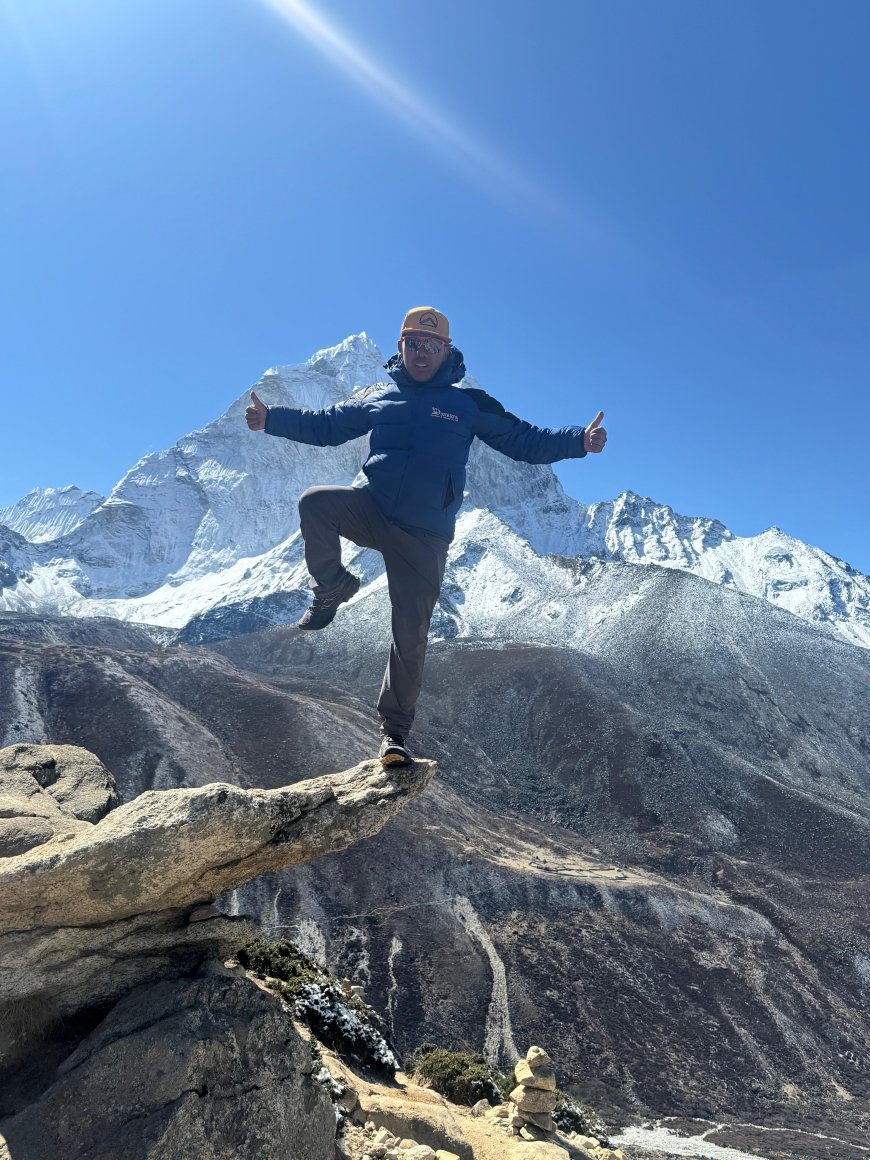How to Support Local Communities on Your Everest Base Camp Adventure
The Everest Base Camp trek offers unmatched views of Everest and other towering peaks.

When you go on yourEverest Base Camp trek itinerary, supporting the local communities can add depth to your trip beyond just the stunning views. Your choices can have a positive impact on the people living in nearby villages. A great way to help out is by staying at locally-owned places and eating at local restaurants. Choosing guesthouses run by Sherpa families not only gives you a genuine experience but also makes sure your money stays in the community. Enjoying meals made by locals also helps them make a living and keeps their traditions alive.
Hiring local guides and porters is important too. They know the area well, which can make your trip safer and more enjoyable. Make sure to work with companies that treat them fairly and pay them properly. Bringing reusable water bottles and cutting down on plastic waste is a way to help protect the local environment that people rely on. Buying handmade crafts and souvenirs directly from the artisans supports their skills and gives them extra income.
You might also consider volunteering or donating to community projects focused on education, health, or the environment. Even small contributions can matter. Most importantly, stay open and respectful of local customs. With these mindful choices, your Everest Base Camp adventure can become more than just a personal goal; it can also support the resilient communities that live there. This not only enhances your experience but also helps keep the cultural and natural beauty alive for future visitors.
Choosing Local Accommodations to Help Out the Community
Staying at local guesthouses and lodges while trekking to Everest Base Camp helps the mountain villages. These places are often family-owned and offer a warm welcome. When you stay local, your money goes straight to community projects, making life better for everyone. Unlike big hotels, these local spots put their earnings back into the town, which helps with schools and healthcare. Plus, you get to experience Sherpa culture and enjoy home-cooked meals, making your trip even more special. Supporting local businesses also keeps the unique vibe of the Everest area alive and supports responsible travel practices.
Hiring Local Guides and Porters Responsibly
Getting local guides and porters is key for a safe and culturally rich experience. Sherpa guides know the Everest trails like the back of their hand. Its important to hire them fairly, which means paying good wages and providing good working conditions. This not only helps their finances but also boosts their living standards. Porters work hard carrying heavy loads and deserve respect. When you work with trustworthy companies, you ensure that guides and porters are treated well. By supporting them, you help the community and connect more with the local culture.
Eating at Local Spots
Eating in local restaurants during your trek is a great way to enjoy tasty, authentic meals while also supporting village economies. These places often use ingredients from nearby farms, which helps promote sustainable farming. Dishes like dal bhat give you a real taste of Sherpa culture and keep you energized. By choosing local food options over big chain restaurants, youre keeping money in the community and encouraging the preservation of traditional cooking. This helps everyone from farmers to cooks, creating a positive impact all around.
Buying Handmade Souvenirs
When you buy handmade crafts from local artisans, youre protecting their cultural heritage and providing much-needed income. Craftspeople in the Everest region create unique things like prayer flags and jewelry. By getting souvenirs directly from them, you ensure that the money supports the community instead of going through middlemen. This helps keep traditional skills alive and inspires young people to continue crafting. Always look for authentic, ethically made products, and steer clear of mass-produced items. Supporting local artisans not only boosts the economy but helps keep the rich culture of Everest's communities vibrant.
Minimizing Environmental Impact
Being mindful of your environmental impact during the trek to Everest Base Camp is important for the local communities. The delicate mountain environment supports their farming and everyday life. Bring reusable water bottles, avoid single-use plastics, and dispose of your trash properly. Participating in clean-up efforts and respecting natural areas shows that you care about local traditions and the environment. A healthy ecosystem leads to sustainable tourism and better living conditions for villagers. Responsible trekkers help protect Everests beauty while ensuring that local communities can thrive alongside tourism.
Getting Involved in Community Tourism
When you take part in community tourism, you get to enjoy the local culture and at the same time help the people who live there. Your visit can help fund schools, health services, and improve local infrastructure in the Everest area. These experiences often include staying with local families, joining cultural workshops, and taking village tours with community members. By engaging in this way, you promote respect and understanding, helping to preserve local culture. Choosing community tourism creates jobs and empowers local people, making sure tourism benefits everyone involved.
Volunteering for a Positive Impact
If you want to make a real difference during your Everest trek, consider volunteering. Many organizations are looking for trekkers to help out in schools, health clinics, or conservation efforts. Even a little time spent volunteering can address gaps in education, healthcare, or environmental protection. It strengthens your connection to the local communities and turns your trip into something meaningful. Just make sure to team up with trusted groups that fit the needs of the community for a lasting impact that doesnt interfere with daily life.
Supporting Local Health and Education Efforts
Donating or raising funds for local health and education initiatives can really help improve life for people in the Everest region. Many villages struggle to access medical care and education because theyre so remote. By supporting health clinics, mobile health camps, or providing school supplies, you can empower residents and kids. These efforts help promote growth and resilience in the community. You can also spread the word about these projects to your friends and family so that your trek to Everest Base Camp makes a difference beyond just the visit.
Honoring Local Traditions
Being respectful of Sherpa customs and traditions can strengthen your relationship with the locals. Simple gestures like warmly greeting villagers, dressing appropriately, and taking part in local festivals can enhance your understanding of the culture. Avoid actions that might offend, such as touching sacred items or taking pictures of people without asking first. Learning about the local customs and stories can add richness to your experience. When travelers show respect, it helps preserve the culture and creates a good vibe between visitors and the community.
Using Eco-Friendly Trekking Gear
Choosing eco-friendly trekking gear and sustainable practices can help protect the environment and support local communities. Go for reusable water bottles, biodegradable soaps, and energy-efficient gear. Stay away from single-use plastics and make sure to take all your trash with you. Picking gear from companies that care about sustainability helps encourage responsible tourism. By being mindful of your impact, you help protect Everests fragile ecosystem, which the locals rely on. Eco-friendly trekking also raises awareness about the conservation challenges in the area, inspiring others to do the same. Together, trekkers and locals can help preserve this beautiful landscape for future generations.
How to Get Ready for Everest Base Camp
Getting ready for Everest Base Camp takes some hard work and good planning. Start your training a few months in advance with cardio exercises like running, hiking, and stair climbing to build your stamina. Dont skip leg and core strength workouts either. Its also super important to adjust to the altitude, so make sure your schedule allows you to take it easy at higher elevations. Pack wisely with layers of clothes, solid hiking boots, and trekking poles. Dont forget must-haves like a good sleeping bag, water purification system, and a first-aid kit. Mentally prepare yourself for rough weather and difficult paths. Booking the right permits and getting a local guide can keep you safe and on track. Good preparation will make your trek more enjoyable and increase your chances of success.
Why Visit Everest Base Camp?
People flock to Everest Base Camp for its stunning views and the excitement of trekking to one of the highest spots on the planet. You get to experience the rich Sherpa culture and take in amazing sights of the Himalayas, including famous mountains like Lhotse and Nuptse. The adventure combines beautiful scenery with cultural experiences, appealing to both seasoned hikers and those checking off their bucket lists. Many come to push their limits, see Everest up close, or support local communities. Reaching the base camp brings a great sense of accomplishment, making it a trip you wont forget.
What's the Best Way to Get to Everest Base Camp?
The best way to get to Everest Base Camp is to trek from Lukla, starting with a flight from Kathmandu. This path gives you a good mix of adventure, altitude adjustment, and local culture. Its smart to hire a local guide and porter for safety and help. The trek usually takes about 12 to 14 days, allowing for steady altitude gain. If youre short on time, helicopter flights are an option, but trekking is the most immersive and rewarding choice. Good planning with a trusted trekking company will help manage permits, places to stay, and logistics.
What Can You Do at Everest Base Camp?
At Everest Base Camp, you can take in amazing views of the highest mountain in the world and the surrounding peaks. Its a great spot to rest, think about your journey, and celebrate a big accomplishment. You can chat with Sherpa climbers getting ready for their climbs and learn about their culture. Lots of folks take pictures with colorful prayer flags and bond with fellow trekkers. Its also a chance to enjoy the beauty and peace of the high Himalayas. Make sure to rest, drink plenty of water, and respect the environment to savor your time at the camp.
Final Thoughts
The Visiting Everest Base Camp Trek package is a memorable adventure that combines challenges, natural beauty, and cultural experiences. Getting ready properly helps ensure a safe and fun trek, while respecting local communities and nature makes the experience even better for everyone. Whether youre drawn by the gorgeous scenery, the challenge of the climb, or the friendliness of Sherpa hospitality, Everest Base Camp offers a journey that leaves a lasting impression. Traveling responsibly lets you leave a positive mark on this amazing region and its resilient people, keeping its magic alive for future adventurers.









































